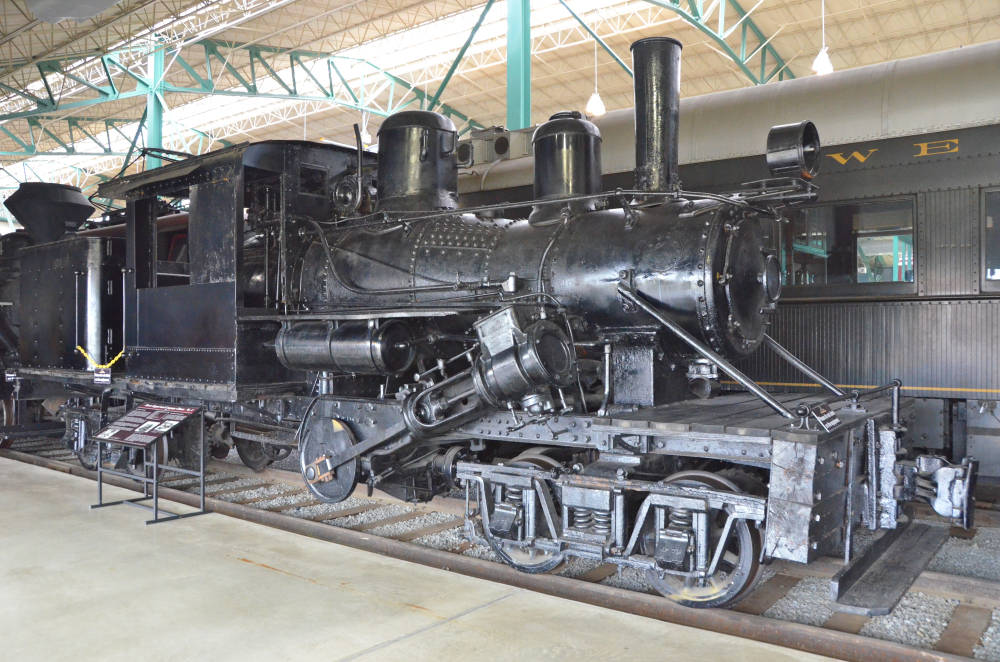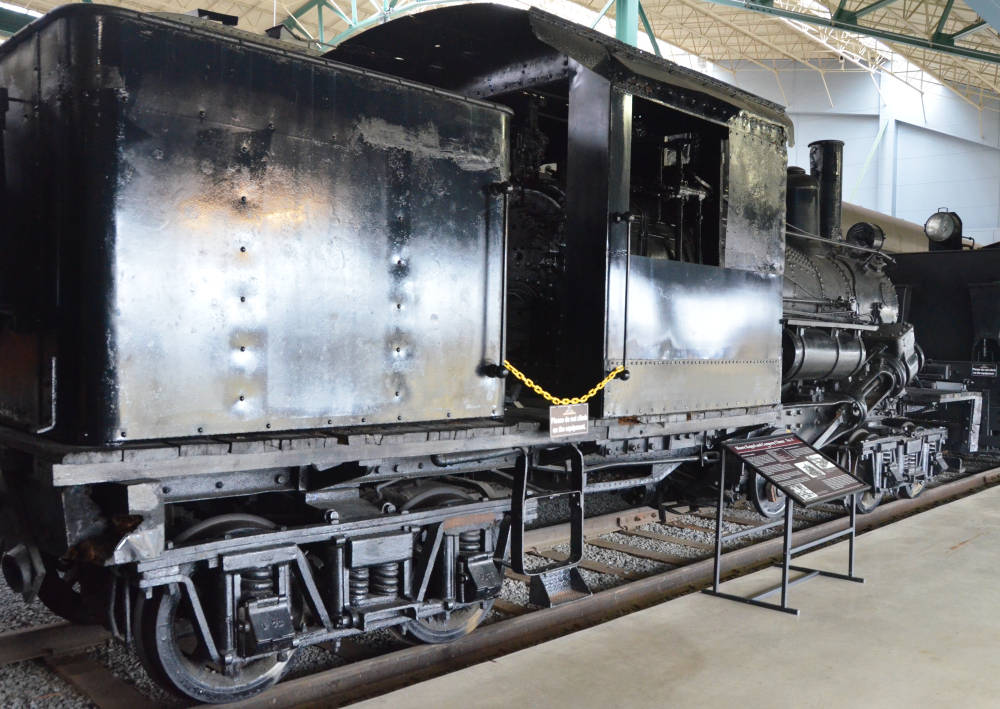
Class A Climax. These late-nineteenth-century American logging and mining locomotives continued in production, according to Labbe and Goe, as late as 1927 when the last was built "for service in Australia" (p. 95). The designers of the Climax A copied its steam engine from those used in tugboats. Like the more elaborate Shays and Heislers, these locomotives could navigate narrow curves and pull heavy loads up sharp inclines, but to do so they chugged along at five or seven miles and hour.


Two views of a Class C Climax in the Railroad Museum of Pennsylvania. Photographs by George P. Landow. [Click on these images for larger pictures.]
Climax later built the more mechanically complex Class B, which had a set of sharply inclined cylinders and driving rods that attached to a mechanism in the middle of the locomotive that in turn powered the wheels via gears. As Michael Koch explains,
The Climax locomotives were offered in three classes, referred to in their catalogue as Class A, Class B. and Class C. Class A locomotives ranged from 12- to 22-ton sizes. Class B locomotives lacked the gear-shift feature and ranged in size from 17 to 62 tons. On these the position of the cylinders was hanged to an angle of about 25 tons with the horizontal. This inclination of the cylinder was a chaacteristic of the Class B Climaxes, making them instantly recognizable. Class C locomotives could be had in weights from 70 to 100 tons. [Koch, p. 50 GPL].
Bibliography
Labbe, John T., and Vernon Goe. Railroads in the Woods. Berkeley, California: Howell-North, 1961, p. 76.
Koch, Michael. Steam and Thunder in the Timber: Saga of the Forest Railroads. Denver: World Press, 1959.
Last modified 22 December 2004